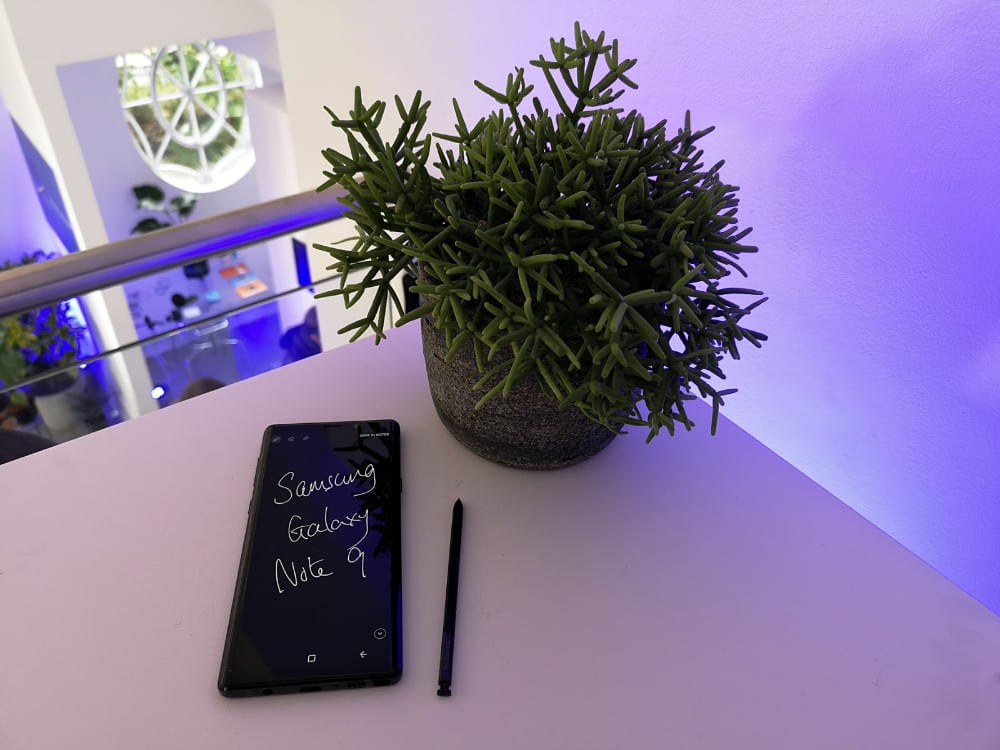
Galaxy Note 9, Tab S4 and Watch: Hands-on with the latest additions to Samsung’s family
Yesterday at a lavish event in New York, Samsung unveiled the new Galaxy Note 9, along with the Galaxy Watch and a new Bixby-powered Galaxy Home speaker. Earlier it had launched the Tab S4 at a separate event.
I wasn’t at either launch event, but I was invited to go along to a smaller and rather cosy launch experience in London, allowing me to get my hands-on the products (well, except the speaker) and see if they’re worthy of all the attention.
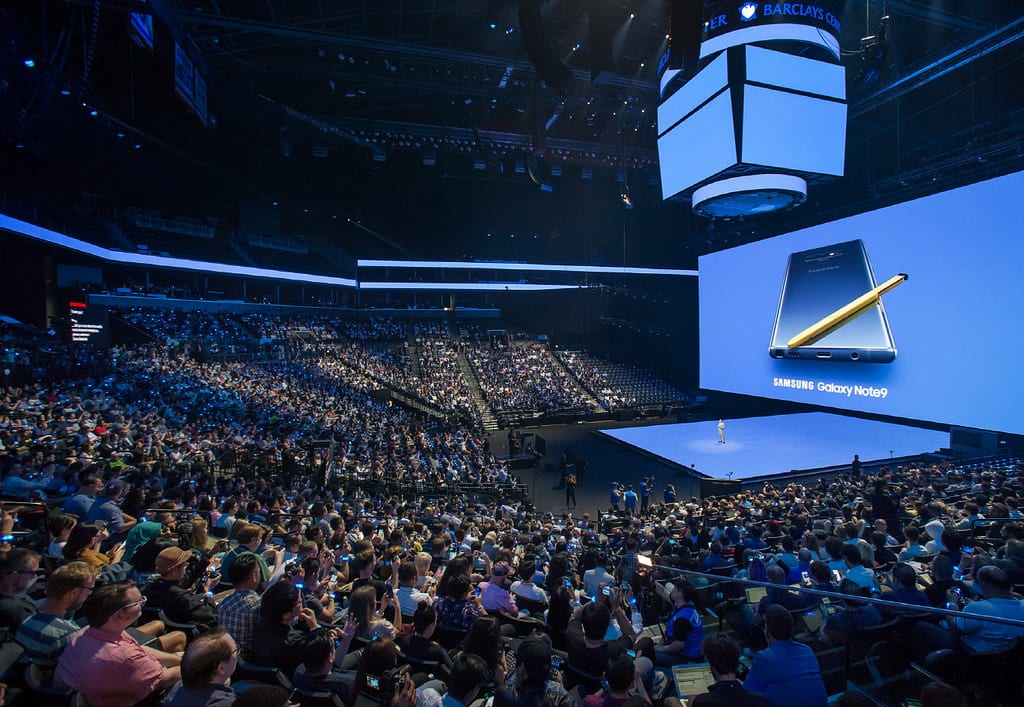

Samsung Galaxy Note 9
First up is the Galaxy Note 9, which is a step up from the Galaxy S9+ with a larger 6.4-inch display, and of course the obligatory S Pen.
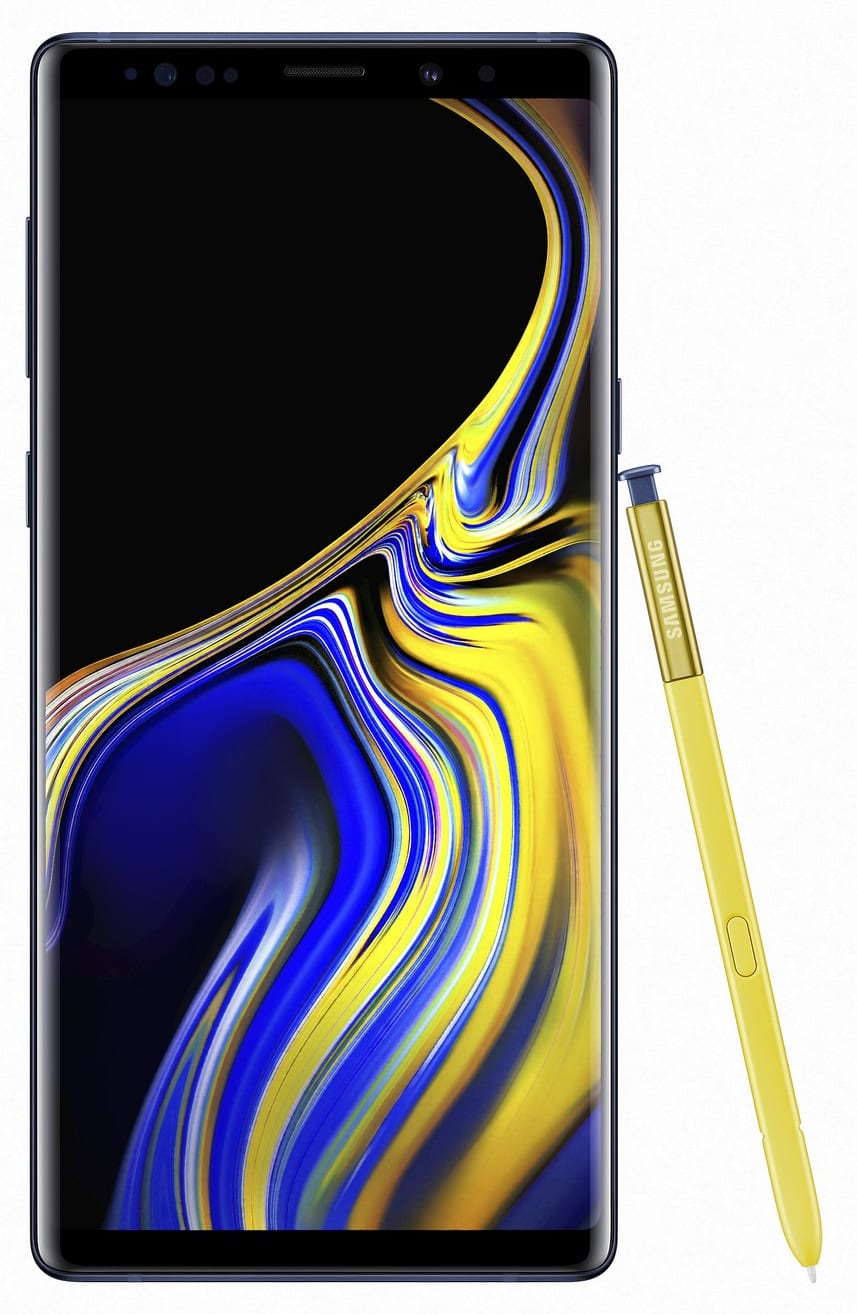 While I am without sales data for the most recent Note products, I have been well-informed by insiders in the past that the Note line was never a big seller in the UK, which prompted Samsung to go as far as create the Galaxy S6 Edge+ for markets where Note sales were poor.
While I am without sales data for the most recent Note products, I have been well-informed by insiders in the past that the Note line was never a big seller in the UK, which prompted Samsung to go as far as create the Galaxy S6 Edge+ for markets where Note sales were poor.
That decision saw Samsung bombarded with demands to reconsider, so after the Note 5 never made an appearance, Samsung relented and brought the Note 7 to the UK when launched.
Of course, we all know what happened to the Note 7.
However, the Note 8 was released to positive reviews, yet I am still unsure if many users bought one because of the S Pen, or merely to get the biggest screen offering.
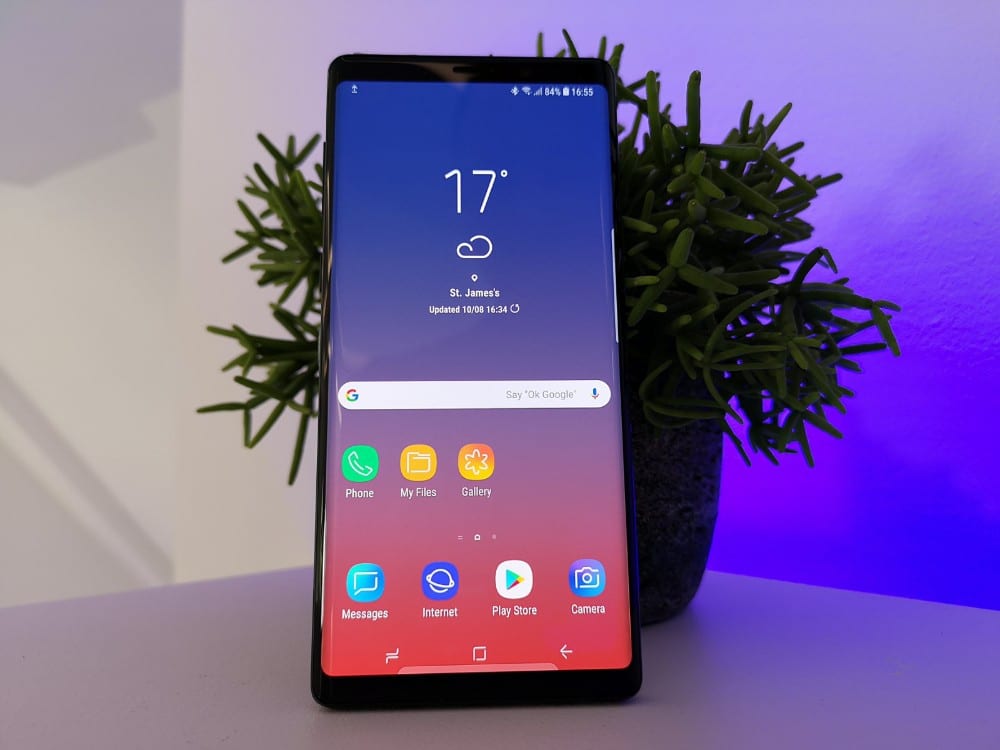
Assuming people aren’t bothered about the pen, there is a fundamental difference with the Note 9, where Samsung has been very innovative by allowing the S Pen to do more than simply work as a pen.
Bluetooth has been added to allow it to be used as a remote control, from changing the slides of the launch event presentation, to acting as a remote shutter for the camera. Third-party developers will soon be free to make the pen control anything they choose, and this actually does give the Note 9 a real edge.
Sure, you can buy Bluetooth remotes cheap from Amazon and eBay that will do much the same, but this slots neatly inside the phone – and even charges when doing so. Given how tiny the pen is, it’s a pretty impressive bit of engineering that makes it worthy of the first mention.
Leave your laptop at home
Another feature that has been ‘upgraded’ is DeX. No longer do you need a dock to connect your device to a monitor and get a ‘desktop experience’. Now it’s as simple as hooking up a USB-C to HDMI cable. You can of course use a USB-C dock to add peripherals, but for the quickest and easiest connection to a big-screen, one cable is all you need.
Of course, this is exactly how it has been since Huawei launched the Mate 10 Pro (a feature that carried over to the P20 Pro) so it isn’t as innovative as adding Bluetooth to a pen, but it definitely makes it more practical, and also helps Samsung promote the idea that your phone could replace the need to carry a laptop with you.
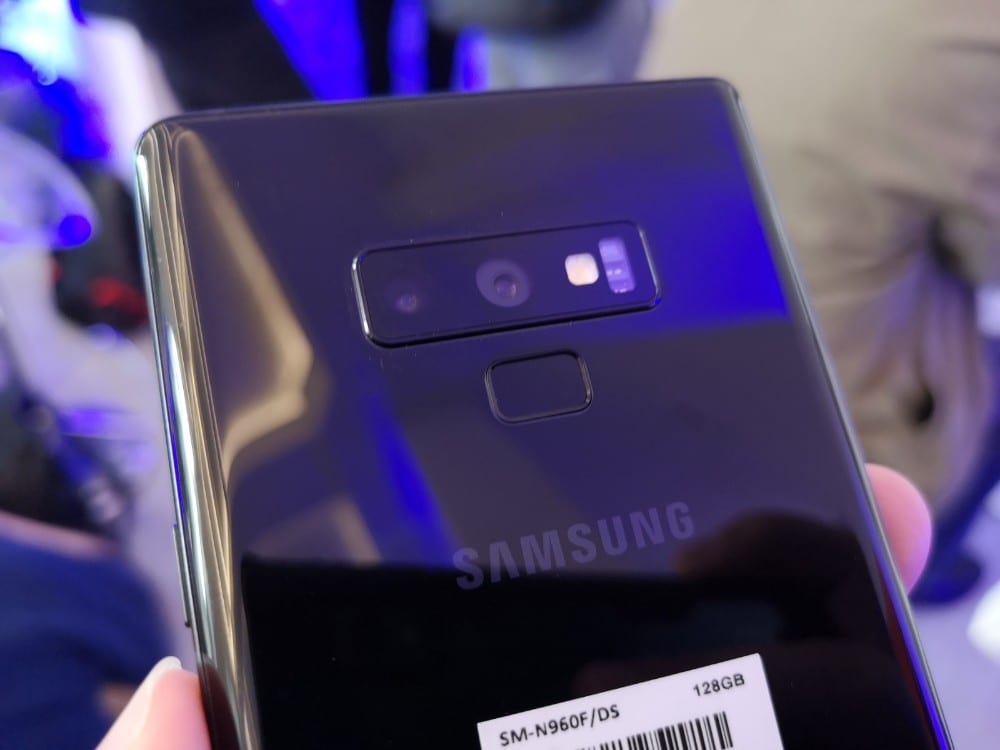
Camera
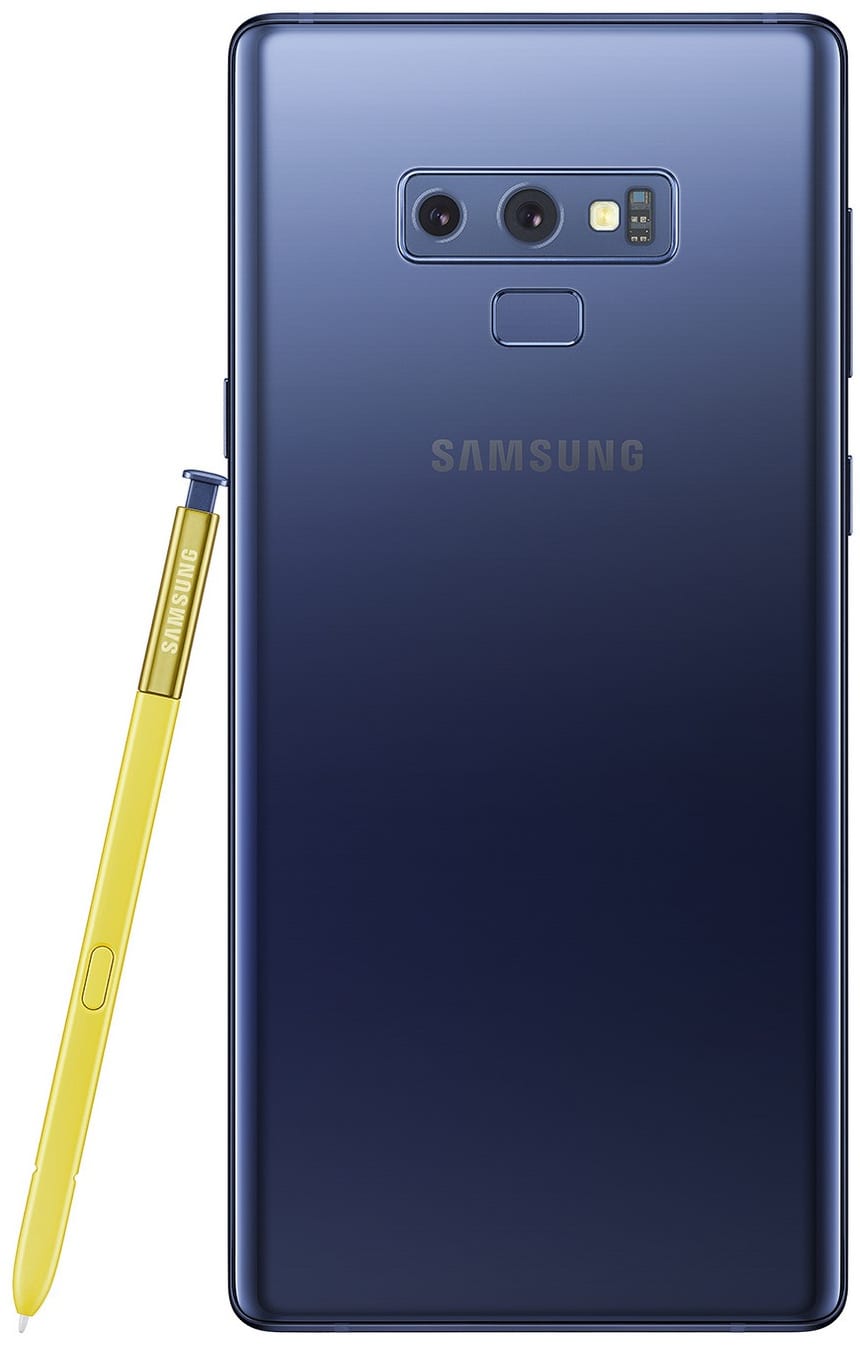 A lot of Samsung’s launch presentation talked about the greater intelligence of the Note 9, and while a lot of that was about how it will connect better with other devices and appliances (more of that later on), it also extended to the camera.
A lot of Samsung’s launch presentation talked about the greater intelligence of the Note 9, and while a lot of that was about how it will connect better with other devices and appliances (more of that later on), it also extended to the camera.
The Note 9 introduces intelligent scene-recognition, akin to that already in use on various Huawei and Honor phones. It stands to reason that AI is going to become a big thing on ALL new phones (except big things when Google launches its new Pixel 3 range) and it’s certainly nice to see that the camera will now adjust various settings on the fly based on what you’re trying to snap.
Another cool feature is the phone analysing the photo and checking that it’s what you want, before you even get a chance to check yourself. Explaining the inconvenience of asking people to get back into place so you can try again, the Note 9 aims to let you know if someone blinked or moved, allowing you to take another shot before the moment is lost.
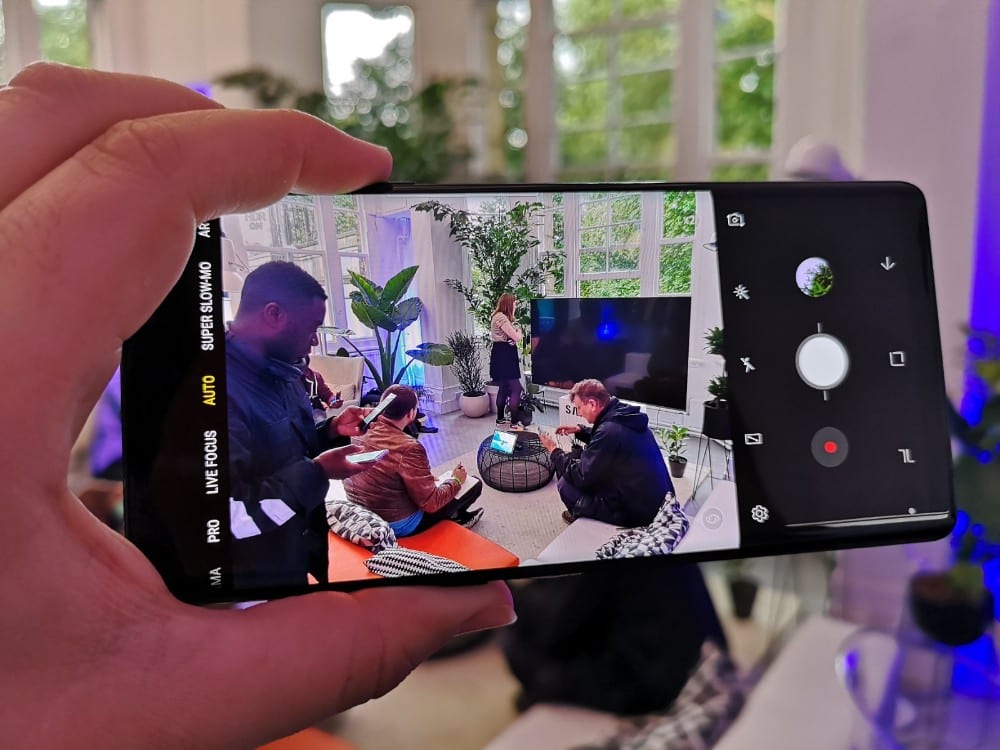
The Note 9 also retains the S9+ dual aperture camera system, paired with a telephoto lens, meaning it should offer the best camera experience from any Samsung phone on sale, and remain so until the Galaxy S10 launch next year.
You can see some sample images and a slow-motion video below. Sadly I wasn’t able to take the phone outside, but it gives you an idea. As with all devices, the super slow motion video requires exceptionally good light conditions, and some lighting can also introduce flickering.
Camera samples
Storage and Connectivity
 128GB or 512GB? That’s not a bad choice when it wasn’t that long ago Apple was considering it acceptable to release a phone with just 8GB of storage and no memory expandability.
128GB or 512GB? That’s not a bad choice when it wasn’t that long ago Apple was considering it acceptable to release a phone with just 8GB of storage and no memory expandability.
Samsung’s entry level 128GB model is complemented by a memory card slot that is capable of taking memory cards of up to 2TB – theoretically.
In reality, 2TB cards don’t exist. It’s not clear when 1TB cards will ship (or how much they’ll cost) but 512GB cards do exist, and that means if you’re willing to stump up an extra £200 for the 512GB model, you could store almost 1TB of data (taking into account the usual losses of a formatted device, and the space for the OS etc).
In a special demo room, Samsung demonstrated how it had filmed various scenes constantly for five days before filling up the phone storage.

That’s pretty insane.
I am sure most people will be just fine with the 128GB model, and you can boost things up with more affordable cards ranging from 64-128GB if things ever get tight, which is rather unlikely.
One thing to note is that the 128GB model has just 6GB of RAM, while the 512GB gets 8GB RAM. 6GB is going to be just fine, in my opinion.
In any case, is it wise to store so much data on a phone? Presumably only if you’ve got the means to back all of that data up.
The Note 9 has you covered here, as it has more than just a USB cable for a straight-to-PC backup. There’s fast 802.11ac Wi-Fi and Cat 18 LTE (1.2Gbps) support include too.
A dual-SIM model is also available when you buy SIM-free, with dual 4G support, although the second SIM will remove the memory card slot from use. None of the UK networks will be selling the dual-SIM model, it should be noted.
Staying power
I’ve perhaps saved the best for last.
One area where Samsung has disappointed for a while is in the battery department. Offering fast charging, and even wireless charging, is no match for not needing to charge at almost any opportunity, for fear of not lasting a day.
With the Note 9 capable of doing so much, Samsung has finally realised that more power efficient processors and better battery optimisation cannot substitute having more juice.
Thankfully the Note 9 gets a 4,000mAh battery that – finally – brings it into line with the flagship Huawei smartphones that have had larger capacity batteries for ages.
Combined with the 10nm process Samsung Exynos or Qualcomm Snapdragon 845 chipsets (the UK will get the former, US users the latter), there’s a good chance the battery life will be markedly improved over both the Galaxy S9 and S9+ models with smaller batteries, making this a phone that will get you through the day without having to resort to drastic measures, like closing apps and adjusting the brightness until you can’t read anything on the screen.
Obviously it’s too early to say how good the battery will be in real life, but I am confident the improvements will be noticeable.
Final thoughts
Will the Note 9 be a success? With prices starting at £899 SIM-free (for the single SIM model with 128GB of storage) it’s not a mainstream phone by any stretch of the imagination. If you want the 512GB model, it’s another £200 on top.
If it’s to be marketed to digital creatives, Samsung has to get over the hurdle of convincing people to not only invest in Samsung, but also Android. Can a Galaxy Note 9, or the Galaxy Tab S4, get people to give up their iPhone X, iPad Pro, likely connected up to a MacBook Pro, with an iMac in the office?
This isn’t a market where battles are won on handset specifications alone, and for those who simply see it as a big-screened Samsung, the price rules it out of any serious consideration.
There’s also the comparison to handsets like the Huawei Mate 10 Pro, or the Huawei P20 Pro. Neither come with a pen, but if my earlier assumption is correct, that isn’t as important as Samsung hopes – at least in some markets. The P20 Pro is available on contracts at almost half the monthly cost, meaning potential savings of around £400 in one year alone.
However, the Note 9 has definitely made many improvements and for me the biggest is the 4,000mAh battery. If there’s one thing to make you stump up the extra money, it’s not a fancier pen, or even a more sensibly placed fingerprint sensor – it’s the thing that will keep you from racing to find a means of charging half way through a busy day.
Is that worth around £65-70 a month on a contract? Well, I can’t really answer that. But at the end of the day, Samsung claims this is the best smartphone it has in its portfolio, and I absolutely agree 100%.
Samsung Galaxy Note 9 Specifications
As provided by Samsung
| Galaxy Note 9 | |
| Display | 6.4-inch Quad HD+ Super AMOLED, 2960×1440 (516ppi)(Screen measured diagonally as a full rectangle without accounting for the rounded corners. Default resolution is Full HD+ and can be changed to Quad HD+ (WQHD+) in Settings.) |
| Camera | Rear: Dual Camera with Dual OIS (Optical Image Stabilisation)– Wide-angle: Super Speed Dual Pixel 12MP AF, F1.5/F2.4, OIS – Telephoto: 12MP AF, F2.4, OIS – 2X optical zoom, up to 10X digital zoomFront: 8MP AF, F1.7 |
| Body | 162 x 76.4 x 9mm, 205g, IP68 (BLE S Pen: 5.7 x 4.35 x 106.42mm, 3.1g, IP68)(Carrying an IP68 dust and water resistance rating. Based on test conditions of submersion in up to 1.5 meters of fresh water for up to 30 minutes.) |
| Chipset | 10nm 64-bit Octa-core processor (Max. 2.7 GHz + 1.7 GHz) |
| Memory | 6GB RAM (LPDDR4), 128GB + MicroSD slot (up to 512GB) 8GB RAM (LPDDR4), 512GB + MicroSD slot (up to 512GB)(May differ by market and mobile operator. User memory is less than the total memory due to storage of the operating system and software used to operate the device features. Actual user memory will vary depending on the operator and may change after software upgrades are performed.) |
| SIM Card | Single: one Nano SIM and one MicroSD slot (up to 512GB)Hybrid: one Nano SIM and one Nano SIM or one MicroSD slot (up to 512GB) |
| Battery | 4,000mAh(Fast Charging compatible on wired and wireless. Wired charging compatible with QC2.0 and AFC. Wireless charging compatible with WPC and PMA.) |
| OS | Android 8.1 (Oreo) |
| Network | Enhanced 4×4 MIMO, 5CA, LAA, LTE Cat.18 |
| Connectivity | Wi-Fi 802.11 a/b/g/n/ac (2.4/5GHz), VHT80 MU-MIMO, 1024QAM, Bluetooth® v 5.0 (LE up to 2Mbps), ANT+, USB Type-C, NFC, Location (GPS, Galileo*, Glonass, BeiDou*) Galileo and BeiDou coverage may be limited. |
| Payment | NFC, MST |
| Sensors | Accelerometer, Barometer, Fingerprint Sensor, Gyro Sensor, Geomagnetic Sensor, Hall Sensor, Heart Rate Sensor, Proximity Sensor, RGB Light Sensor, Iris Sensor, Pressure Sensor |
| Security | Lock Type: Pattern, Pin, Password Biometric Lock Types: Iris Scanner, Fingerprint Scanner, Facial RecognitionIntelligent scan: Combines iris scan and face recognition for convenient unlocking and in some cases provides enhanced security for certain authentication services |
| Audio | MP3, M4A, 3GA, AAC, OGG, OGA, WAV, WMA, AMR, AWB, FLAC, MID, MIDI, XMF, MXMF, IMY, RTTTL, RTX, OTA, DSF, DFF, APE |
| Video | MP4, M4V, 3GP, 3G2, WMV, ASF, AVI, FLV, MKV, WEBM |
Availability
The Galaxy Note 9 goes on sale August 24th, but pre-ordering is already open from the networks, and other high-street and online retailers.
Colours include Midnight Black and Lavender Purple, with matching S Pen, and Ocean Blue with a yellow S Pen.
SIM Free pricing is £899 for the 128GB model and £1099 for the 512GB model. Contact pricing varies depending on network, starting at around £60 and upwards depending on data allowances. Many networks also have an up-front cost, and the pricing is based on the 128GB single-SIM variant.
More information:
Samsung Galaxy Tab S4

A little surprising was the lack of Tab S4 tablets to have a play with, with most set up to demonstrate the DeX capabilities, the audio playback quality, or to let you play Fortnite – a game that’s exclusive for Samsung Galaxy users (tablets and phones) for a while before rolling out to all Android users.
From a brief play, what can I say? It’s a tablet that runs Android and has the enhanced S Pen support, and an optional keyboard cover.
Without having an in-depth play, it’s hard to say anything more than that – but I am not sure Android is the best OS for productivity on a tablet these days. I’d have much preferred to see Chrome OS installed, with Android apps running on top.
From a productivity point of view, this would likely improve the experience significantly.
I fully expect that Samsung will have more Chrome OS devices in the pipeline, and hope that something may be unveiled at IFA at the end of August, and failing that, in time for CES in January next year.
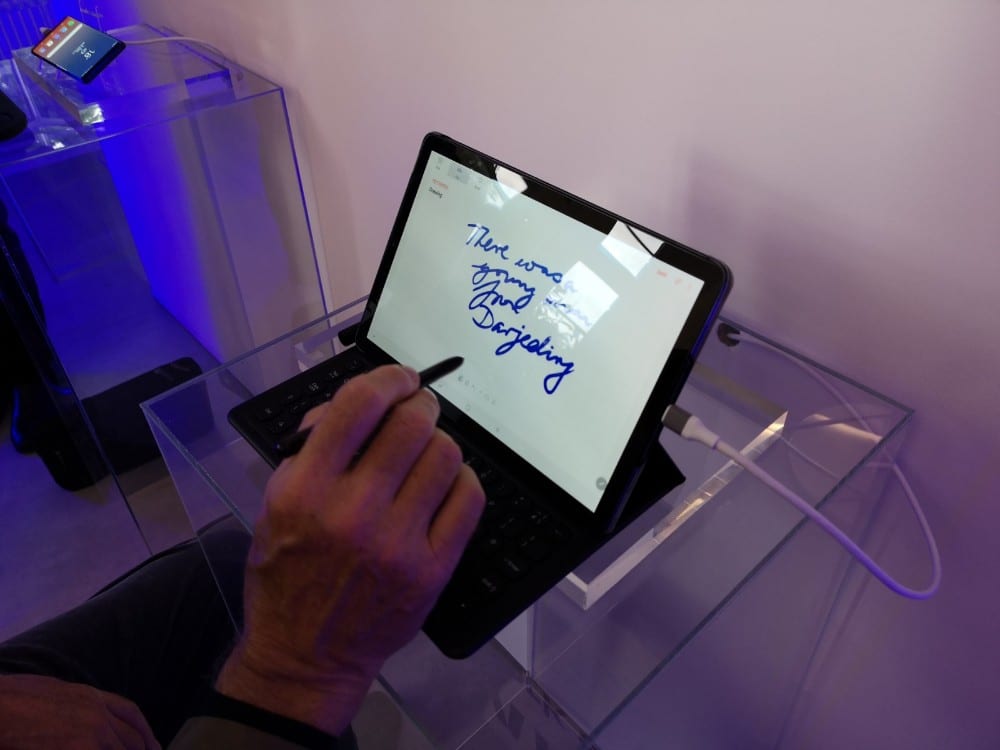

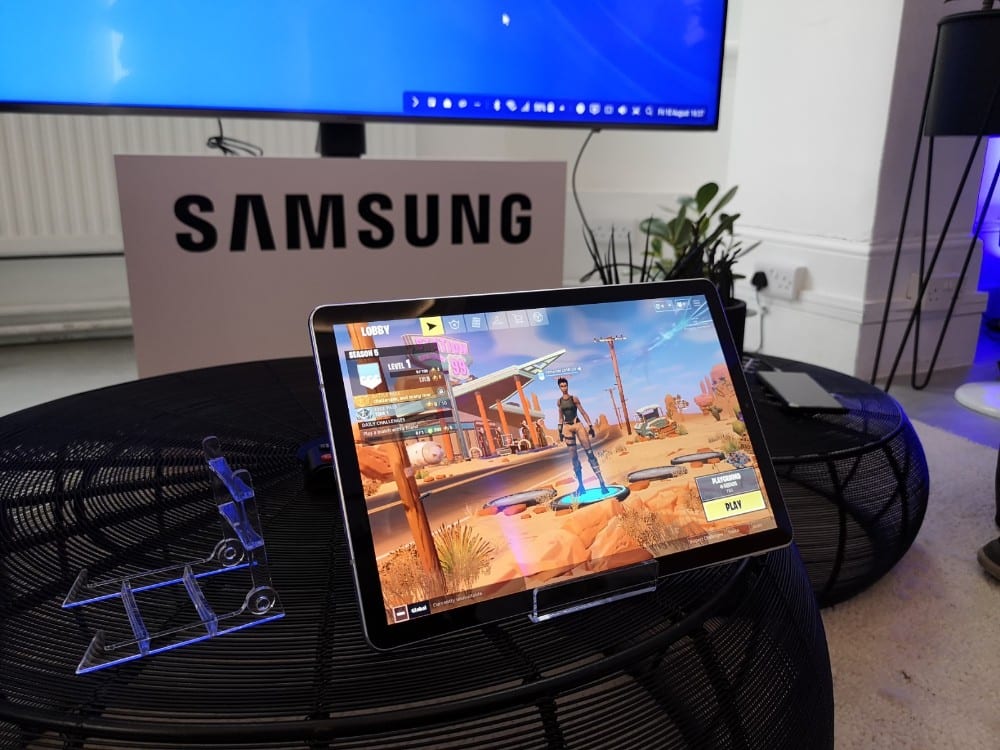

Samsung Galaxy Watch

As someone who has always been a Pebble fan, and recently switched to Android Wear/Wear OS – rather reluctantly at first – I have come to accept that Pebble is no more.
Sure, Pebble users have the Rebble project to keep things alive, but I’ve come to accept that Pebble is no more (and it seems that Android Pie is causing Pebble users some issues).
Fitbit has done little to nothing to release something I could upgrade to, so I made do with a Huawei Smart Watch 2 for well over a year.
But then I decided to try out an Amazfit Bip. A £70 watch with heart rate monitor, GPS, an always-on display, simple notifications and up to 45 day battery life. It has been getting rave reviews, and it was cheap enough for me to take a punt. I’ll have a separate review up shortly.
For me, it has been a dream come true. I’ve lost access to Google Pay, but now have something that just lasts and lasts and lasts. Fitbit couldn’t make something like this, but Xiaomi (the company behind Amazfit) has come up trumps.
I mention this because when I saw the Galaxy Watch, I was hoping for something significant besides the promise of a battery life of ‘up to’ 168 hours. That’s seven days, which is certainly very impressive, but I can’t help but feel that with regular usage it will fall far short – certainly if keeping the display on at all times.
The 4G enabled model (that EE will likely have an exclusive on, as with the 4G Apple Watch) is likely to fare even worse.
In terms of display quality, there’s no contest. Some people will also want a watch that allows you to run apps and make mobile payments, or make and receive calls. I’m missing Google Pay, but have never felt the need to run apps on a watch. In almost any given situation, it’s easier to use my phone. Simple notifications, or seeing who is calling, enables me to decide whether to pull out my phone or not. That’s all I need, and all I have ever wanted.
The 4G watch will let you leave your phone at home, but how many times will you ever do that? I’d always feel lost without my phone, and I’m not ready to rely solely on a watch just yet. Especially when it will come with an additional monthly subscription.
Suffice to say, my opinion of smartwatches may rule me out from making an impartial judgement on how good this particular watch may or may not be. For me, it’s much like every Gear watch that has come before it, but with better battery life.
If it had come with a hybrid display like the Ticwatch Pro, I may have been more interested. For now, I still feel that there’s more innovation needed. I am sure it will come (I am keen to see what Qualcomm launches next month, and indeed what Amazfit comes up with next), and for the time being I’ll stick with my £70 Bip!
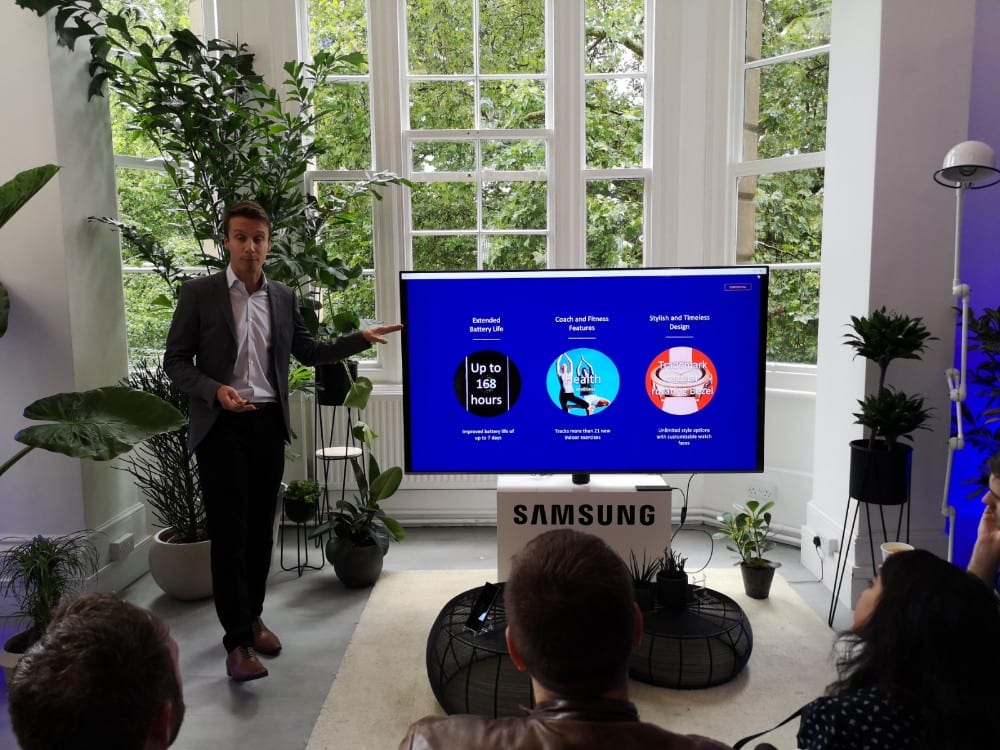
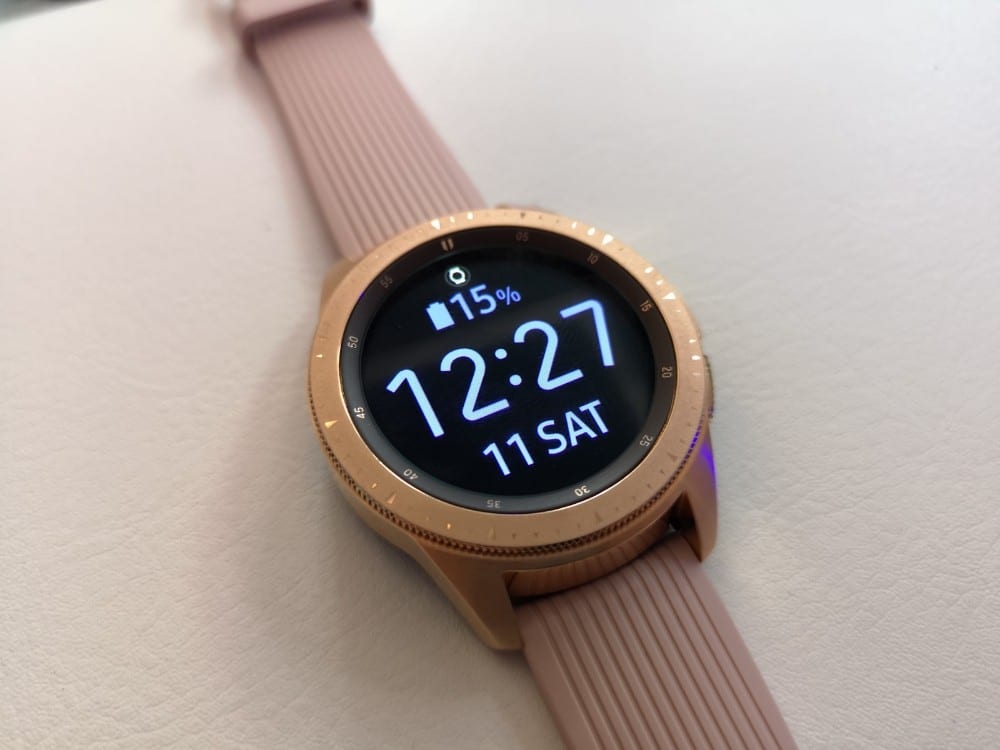
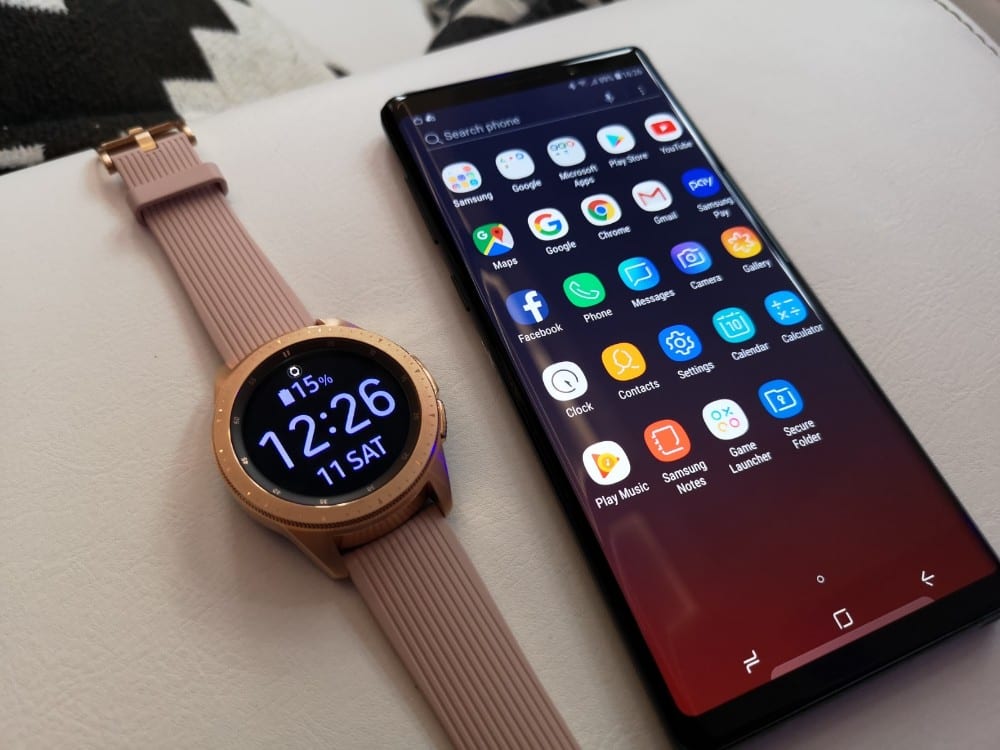
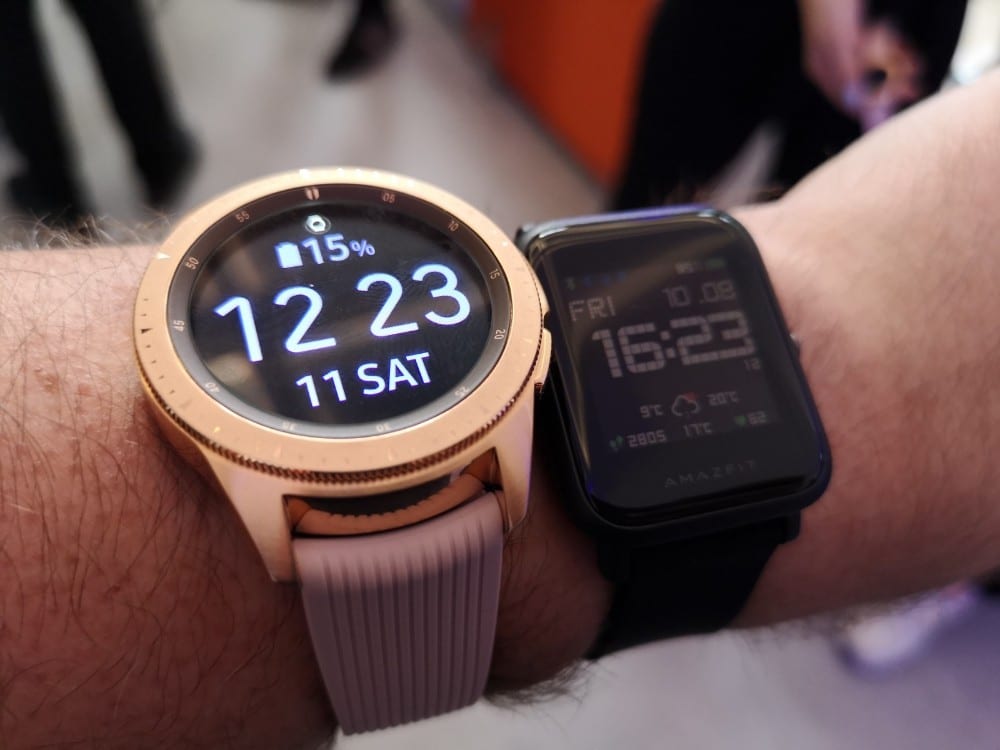
Connected Experience
There’s more to come from Samsung, and I’ll be at their event at IFA at the end of August. It will see the company once again try and link your smartphone with a truly connected home, bringing home appliances and TVs together.
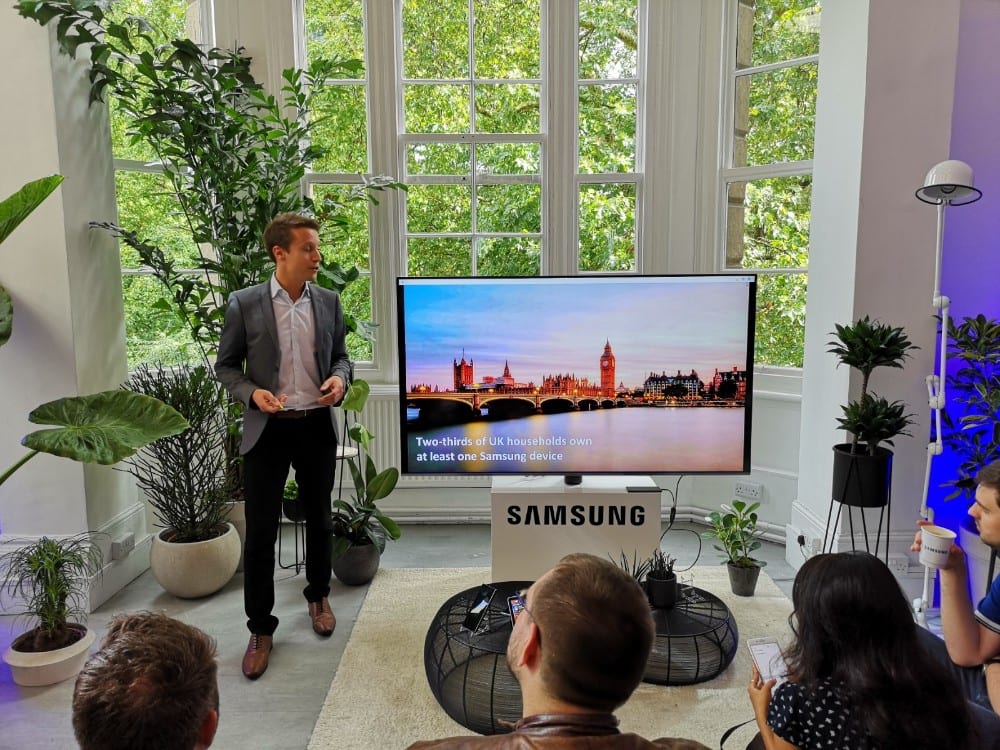
Samsung stated that two-thirds of people in the UK own at least one Samsung device. Getting users to buy connected devices is the dream of every manufacturer suffering from a slow down in smartphone sales, but how successful any of them will be is perhaps shown by the continual attempts to launch products and sell idyllic experiences.
You can be sure that the Note 9 will be showcased again in a few weeks, along with a bunch of new services. I am sure the watch will feature too, and users of existing Samsung phones will be able to get in on the act too.
Let’s wait and see…
Do you like these long-form posts? Would you rather shorter articles? Please let me know in the comments below, and remember to follow me on Twitter and Instagram for more regular updates. Please also follow this site if you like what you read. You’ll never be bombarded with clickbait I promise!

